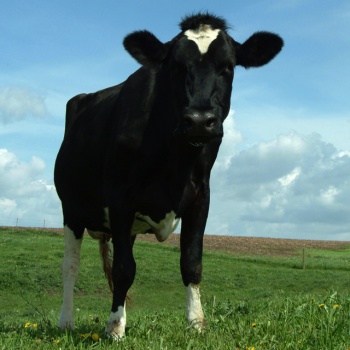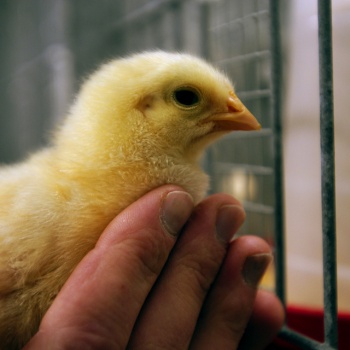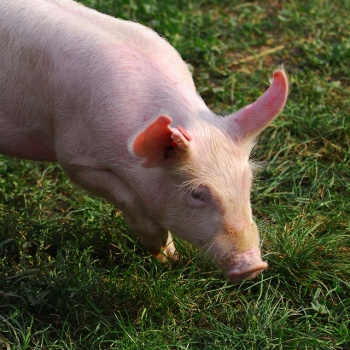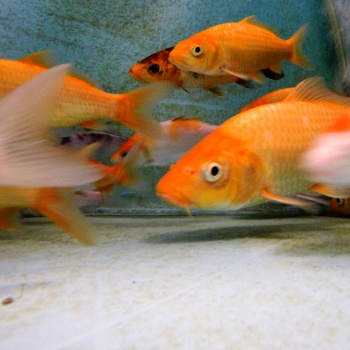GLOSARIO DE TÉRMINOS
El Equipo de Manejo de Micotoxinas de Alltech ha preparado un glosario de términos que se utilizan en nuestra página web y en nuestra literatura para ayudarle a comprender mejor los problemas relativos a las micotoxinas. Este glosario está diseñado para comprometerlo y empoderarlo a fin de que tome decisiones, nos conozca mejor y conozca los servicios que prestamos.
Si no encuentra el término que está buscando, por favor utilice el Formulario de Contacto para que consideremos la posibilidad de incluirlo.
- 37+ Analysis
A laboratory test, part of the Alltech Mycotoxin Management Programme, used to detect mycotoxins in animal feedstuffs. Uses the LC-MS/MS method to detect 38 mycotoxins at low levels in various feedstuffs.
- Acidosis
A metabolic disease of cattle seen when the pH of the rumen drops below 5.5. Rumen movement stops and appetite and overall cow production are reduced. Often caused by feeding large amounts of rapidly digestible carbohydrates, such as barley. Acute acidosis can cause death, more common in beef cattle than dairy.
- Acute
A disease classified as acute has a sudden onset and is severe, it will usually be short lived but can be long lived.
- Adsorbent
A mycotoxin adsorbent is a feed additive capable of binding to mycotoxins in the digestive tract of animals, preventing the absorption of the mycotoxins into the animal's bloodstream. The adsorbent and the bound mycotoxins leave the animal's body via the faeces. Also called a binder.
- Aerobic
In the presence of oxygen.
- Aflatoxin M1
Cattle convert aflatoxin B1 to aflatoxin M1, with aflatoxin M1 (also a carcinogen) passing in to milk for human consumption.
- Aflatoxins
Mycotoxins produced by certain Aspergillus moulds, most commonly Aspergillus flavus and Aspergillus parasiticus. The major forms of aflatoxins are aflatoxin B1, aflatoxin B2, aflatoxin G1 and aflatoxin G2. Aflatoxin B1 is the most common and most toxic in both animals and humans. It is a carcinogen so out of all the mycotoxins is the most regulated in both animal feedstuffs and human foods. Cattle convert aflatoxin B1 to aflatoxin M1.
- Anaerobic
In the absence of oxygen.
- Aspergillus sp.
Typically storage fungi found in warmer countries, however with climate change countries like the UK are seeing an increase in Aspergillus species contamination of crops. Common Aspergillus species include Aspergillus clavatus, Aspergillus flavus, Aspergillus fumigatus, Aspergillus ochraceus and Aspergillus parasiticus, all of which are capable of producing different mycotoxins when stressed.
- Breeder
Mature female poultry that produce fertile eggs for breeding.
- Broiler
Young poultry used as meat for human consumption.
- Bursa
A lymphoid and epithelial organ only found in birds.
- Carcinogen
A substance capable of causing cancer.
- Cereal Crop
Grasses, such as maize or wheat, that have starchy grains. Harvested for use as human and animal feedstuffs. (Also called grain crop).
- Chronic
A disease that is classified as chronic is persistent/has long lasting effects.
- Citrinin
A mycotoxin produced most commonly by Penicillium citrinum but also by some species of Aspergillus. It is a neurotoxin. Also causes an increased water consumption, diarrhoea, decreased body weight, enlarged kidneys in poultry and mottled liver. Most commonly found in maize, wheat and barley.
- Corn
Known as maize in the UK. (See maize).
- Deoxynivalenol (DON)
A mycotoxin classified as a type B trichothecence produced by certain Fusarium moulds. Causes vomiting and feed refusal in swine, is tolerated to an extent in cattle (if silage mycotoxins are absent) and causes reduced feed intake and immunity in poultry. Can be found in a range of crops, including wheat, maize and barley.
- Diacetoxyscirpenol (DAS)
A mycotoxin classified as a type A trichothecence produced by many Fusarium moulds. DAS is largely degraded by cattle with a well functioning rumen but is toxic to poultry, causing upper digestive tract lesions. Can be found in a range of crops.
- Endophyte
A bacterium or fungus that lives within infected plants.
- Ergot alkaloids
Mycotoxins formed by Neotyphodium species, ergovaline and ergovalinine are the most common toxins. Others include ergine, erginine and clavine alkaloids such as argoclavine. These toxins are found in fescue that is infected with Neotyphodium species, however these toxins are less toxic to animals. Neotyphodium species are also capable of producing lolitrem B, which does cause issues to livestock when ingested (see ryegrass staggers).
- Ergotism
A disease of animals and humans, caused by the ingestion of rye or cereal grains contaminated with Claviceps purpurea, which produce ergot alkaloids. Cattle are the species most at risk. Symptoms include, ataxia, hypersensitivity, convulsions, gangrene, loss of weight, agalactia, lameness and abortion.
- Ergovaline
A toxin that causes 'fescue foot' in cattle due to its vasconstrictive properties. Produced by various endophytes.
- Feed Conversion Ratio (FCR)
Measure of an animal's efficiency at converting feed to increased body mass.
- Fermentation
The chemical breakdown of a substance, e.g silage, by microorganisms such as bacteria, yeast and fungi in the absence of oxygen. Various sugars are broken down by the fermentation process to a variety of end products, usually acids, gases and alcohols. Reaction also produces heat.
- Fescue toxicosis
A toxic reaction in the body of animals that have ingested tall fescue infected with endophytes that produce the toxin ergovaline. Tall fescue is a major forage grass found in America in central and south-eastern states. In cattle signs of fescue toxicosis include low conception rates, low milk production, reduced weight gain, hyperthermia in the summer.
- Field fungi
Fungi that invade the crop while it is still in the field (pre-harvest). These fungi include the Fusarium species and some Aspergillus species. They generally require higher moisture levels than storage fungi.
- Fodder
Feedstuffs given to livestock, usually hay, straw, silage or concentrates.
- Forage
Plants, other than grain, grown to be fed to livestock.
- Fumonisins
Mycotoxins that are classified as non-trichothecence mycotoxins, produced by Fusarium moulds. Common fumonisins include fumonisin B1, fumonisin B2 and fumonisin B3, with fumonisin B1 being the most common. A wide range of crops can be contaminated with fumonisins, including maize, barley and wheat.
- Fusaric acid
A non-trichothecence mycotoxin produced by many Fusarium moulds. Alters brain chemistry in pigs and acts synergistically with DON.
- Fusarium sp.
Moulds most commonly found contaminating crops in the field (pre-harvest). Fusarium moulds produce a range of different mycotoxins when stressed and are capable of contaminating a range of different crops.
- Gizzard
A muscular organ found in the digestive tract of poultry, used to grind feed with ingested grit, in order to aid digestion.
- Gliotoxin
A mycotoxin produced by moulds such as Aspergillus fumigatus. It causes cell death and is a strong immunosuppressant when ingested by animals. If an animal is exposed to the mycotoxin for a long period of time, its toxicity will be accelerated. Cattle with mastitis that are unable to be treated may be the due to ingestion of gliotoxin.
- Grower/finisher
A young pig being fattened for slaughter.
- Gut lumen
The tubular part of the digestive tract that holds the partially digested contents and where breakdown takes place.
- HT-2 Toxin
A mycotoxin, classified as a type A trichothecence, produced by various Fusarium moulds and can be found in a wide range of crops.
- Hatchability
Percentage of fertile eggs that hatch, aim is above 85%.
- Heifer
A young female cow that has not yet given birth to a calf.
- Hock
A pronounced joint in the hind leg of cattle and horses found between the knee and fetlock. The hock points slightly backwards.
- Hyphae
Long filaments produced by moulds. Hyphae are needed for mould growth, survival and dispersion. They allow the mould to grow from single cells to branched bodies of hyphae (mycelium).
- Immunosuppressant
A substance that weakens or inhibits the body's immune system, allowing pathogens to thrive, potentially causing infection.
- Lameness
A condition commonly seen in high producing dairy cows in which mobility is affected. There are a range of different causes that fall under infectious or non-infectious agents. Lameness causes reduced feed intake, causing reduced body weight and production such as a reduced milk yield.
- Laminitis
Inflammation of the laminae of the hoof, impacting an animal's mobility. Common in horses and cattle. Commonly caused by ingestion of rich grass in horses and can be caused by a range of different factors in cattle. Reduced mobility in cattle leads to reduced feed intake and consequently reduced body weight and production.
- Layers
Poultry bred to produce large numbers of eggs used for human consumption.
- Legume
Type of plant, commonly grown as a crop, which produces its seeds in pods. Can be used for livestock forage or silage. Common legumes used in agriculture include alfalfa, peas and soybean.
- Lesion
A change or abnormality to the tissue of a living organism, most commonly caused by trauma or disease.
- Lolitrem B
A tremorgen produced by Neotyphodium lolii, an endophytic fungus. Causes ryegrass staggers.
- MIKO
MIKO is part of the Alltech Mycotoxin Management Team’s programme. Based on the principles of Hazard Analysis Critical Control Points (HACCP), it identifies the mycotoxin risks within a given farm/ feed mill and creates a plan to minimise the risks for the animal, and consequently for consumers.
- Maize
Known as corn in the US. Maize can be harvested as a grain crop or as a whole crop for silage. Warmer climates are typically more suitable for the grain crop, allowing it to ripen. The US and China produce large amounts of maize.
- Mastitis
Inflammation of the mammary gland of the udder. Can be caused by various factors, such as physical damage or infection due to various pathogens, either contagious or environmental.
- Moniliformin
A mycotoxin produced by various Fusarium moulds, including Fusarium proliferatum. It is extremely toxic to young chicks and other young poultry species, causing cardiac injury. Low levels of moniliformin will reduce growth rates, increase heart size, reduce immunity and cause cardiac lesions.
- Mould
A type of fungus that grows by producing hyphae, multicellular filaments. Much larger than yeasts.
- Mycelium
A network of hyphae. Mycelium cement maize kernels together, resulting in grain that cannot be separated.
- Mycophenolic acid
A mycotoxin produced by various Penicillium moulds and found in silage. An immunosuppressant.
- Mycosorb A+
An Alltech yeast cell wall and algae based mycotoxin adsorbent that is added to animal feedstuffs to significantly reduce the effects of mycotoxins on animals. Can be used in all species, but most commonly in cattle, pigs and poultry.
- Mycotoxicosis
A toxic reaction in the body of animals/humans who have ingested mycotoxins.
- Mycotoxin
A toxic substance with a low molecular weight, produced by certain moulds. Mycotoxins are secondary metabolites so are only produced when the mould is stressed in order to protect the spores. Conditions defined as 'stressful' vary depending on the species of mould but generally include increased levels of moisture and heat. Mycotoxins affect the health of both animals and humans. Over 500 mycotoxins have been discovered to date. Each mycotoxin affects the animal/human in a certain way, with some mycotoxins being carcinogenic, neurotoxic and immunosuppressive.
- Neotyphodium lolii
An endophytic fungus that produces lolitrem B, causing ryegrass staggers if ingested by animals.
- Nephrotoxin
A substance that causes damage to the kidneys.
- Neurotoxin
A substance that causes damage to the nervous system or nerve tissue.
- Nivalenol (NIV)
A mycotoxin, classified as a Type B trichothecence, produced by various Fusarium moulds. An immunosuppressant.
- Ochratoxin A
A mycotoxin classified as a phenylalanine-dihydroisocoumarin produced by various Penicillium moulds (produce OTA in temperature countries) and Aspergillus moulds (produce OTA in tropical countries), especially Penicillium verrucosum and Aspergillus ochraceus. If silage mycotoxins are not present, the rumen is able to break OTA down so it has less of an effect in ruminants than monogastrics. In swine and poultry ochratoxin A causes nephropathies, reduced weight gain, feed intake and feed efficiency.
- Oxidative stress
The presence of oxygen in cells causing their impairment.
- PR Toxin
A mycotoxin produced by certain Penicillum moulds and can be found in silage.
- Pathogen
A microorganism capable of causing disease.
- Patulin
A mycotoxin produced by Penicillium moulds, including Penicillium roquefortine. It is a neurotoxin and causes a lack of coordination and muscle weakness in animals that have ingested it. Patulin reduces the production of volatile fatty acids in ruminants, reducing the amount of energy a cow is capable of obtaining from its diet. Patulin is commonly found in silage so is classified as a silage mycotoxin.
- Penicillic acid
A mycotoxin produced by Penicillum moulds, such as Penicillium roquefortine. Commonly found in silage so is classified as a silage mycotoxin.
- Penicillium sp.
Typically storage fungi found in a wide range of crops and silage. Capable of producing a wide range of mycotoxins.
- Premix
Feedstuff fed to livestock that contains various plant based materials, additives and essential nutrients. Can be added to grain or forage. Bought from premix companies. Usually pelleted.
- Protozoa
Microscopic, single celled organisms that live in the rumen of cattle, thriving off of the nutrients ingested by the cattle and breaking down the feedstuffs, benefitting the cow.
- Rumen
The first of 4 stomachs in cattle. The rumen contains various microbes that breakdown plant based feedstuffs into volatile fatty acids for energy.
- Ruminant
A hooved animal with a rumen. A ruminant's process of digestion involves ingesting plant matter, regurgitating the semi-digested material (cud), chewing the cud, re-swallowing this material and fermenting it in the rumen. Sheep, cows, goats and buffalo are ruminants (see rumen).
- Ryegrass Staggers
A disease that effects the nervous system of animals who have ingested perennial ryegrass containing high levels of lolitrem B. Symptoms include ataxia, lack of coordination, collapse and head shaking. These effects are temporary but lack of coordination can causes drowning and running into fences etc. Most common when pastures are over-grazed.
- Scours
Diarrhoea. A common problem in calves. Caused by a range of factors, can be infectious or non-infectious. Causes financial problems to farmers.
- Sequestering Agent
An additive added to animal feedstuffs to minimise the toxicological impacts of mycotoxins to the animal and to reduce carryover of mycotoxins into the food chain for human consumption.
- Silage
Fodder that has been harvested, compacted and stored in airtight conditions in a silo or silage clamp. It undergoes a fermentation process and lactic acid, acetic acid and propionic acid are produced. Silage is commonly fed to cattle. Maize and grass silages are the most common in the UK.
- Silage clamp
A walled area used to store silage. Made of a back wall and two side walls, no front wall to allow for the silage to be removed. The clamp is filled by depositing the silage in the clamp and rolling over it in tractors many times to compact it and prevent oxygen for entering. The silage is left to ferment and is removed gradually. Silage clamps vary in height, width and depth.
- Silage mycotoxins
Most commonly, Penicillium moulds and some Aspergillus moulds survive in silage and produce mycotoxins. Fusarium moulds usually die in the process of being ensiled. Many silage mycotoxins have antimicrobial effects on the microbes found in the rumen. These mycotoxins negatively affect the fermentation process, causes various effects such as reduced milk yield. Silage mycotoxins can also be neurotoxic and tremorgenic. Examples include penicillic acid, PR toxin and mycophenolic acid.
- Silo
Used to store grain, usually a tall tower or a pit.
- Sow
Female adult swine used for breeding.
- Spore(s)
Microscopic particles produced by fungi to allow them to produce asexually. Different spores have different properties, however they are adapted for dispersal. Mycotoxins are produced when the mould is stressed to protect spores.
- Spring Wheat
Wheat planted in spring and harvested the following summer.
- Storage fungi
Fungi that invade animal feedstuffs during the storage period (post-harvest). They generally need less moisture than field fungi and are not a large problem before harvest. Aspergillus and Penicillium species are classed are storage fungi.
- Sub-acute
A disease classified as sub-acute falls between acute and chronic. It may have had a reasonably recent onset and reasonably rapid changes to the animal may have been seen.
- Sub-acute Ruminal Acidosis (SARA)
A disorder of the rumen, characterised by periods of low ruminal pH below 5.5. It is common in high producing dairy cows. Symptoms include diarrhoea, reduced rumination and undigested grain in faeces. Secondary signs include laminitis and poor body condition. Indication of SARA may be low milk fat. Causes decreased milk yields and reduced health, may result in culling.
- Synergism
The interaction of 2 or more substances, e.g mycotoxins, that produce more negative health effects than the sum of the separate effects of individual substances.
- T-2 Toxin
A mycotoxin, classified as a type A trichothecence, produced by various Fusarium moulds. Causes feed refusal and gastrointestinal lesions in cattle and gizzard erosions and lesions of the upper digestive tract in poultry, causing reduced productivity in many species.
- Total Mixed Ration (TMR)
A complete ration, fed to livestock, containing different feedstuffs used to meet their nutritional requirements. A TMR for cattle may contain a mixture of silage, concentrates and other ingredients depending upon what the farmer and nutritionist decide is most suitable. If collecting samples to analyse for mycotoxin contamination, the TMR should be used to give a representative sample of the entire diet fed to the animal.
- Trichothecenes
Largest family of mycotoxins produced by Fusarium species, divided into 4 subgroups, with 2 major groups being type A and type B trichothecenes. Type A trichothecenes include T-2 toxin, HT-2 toxin and Diacetoxyscirpenol (DAS). Type B trichothecenes include deoxynivalenol (DON) and nivalenol.
- Weaner
An animal that has been taken away from its mother. Pigs that have been weaned and are under 30kg are the species most commonly referred to as weaners.
- Wheat
A cereal grain, but can also be harvested as straw for cattle. Wheat is grown for both the human food industry and for animal feedstuffs. It makes up a large portion of swine and poultry diets. Can be contaminated with a range of fungi that are capable of producing many mycotoxins if stressful conditions are present.
- Winter Wheat
Wheat planted in autumn and harvested the following summer. In countries that do this, winter wheat yields are usually higher than spring wheat yields.
- Yeast
Microscopic, single celled fungi that reproduce asexually by the process of budding.
- Zearalenone
A mycotoxin produced by various Fusarium moulds, including Fusarium graminearium. Binds to oestrogen receptors, causing reduced reproductivity in all species, both female and male.
- sp.
Species
- α-zearalenol
A substance formed when zearalenone is broken down in the digestive tract of animals. More potent than zearalenone.
- β-zearalenol
Zearalenone is converted to β-zearalenol, in the digestive tract of animals (α-zearalenol is also formed from zearalenone). Less β-zearalenol is formed from zearalenone than α-zearalenol. β-zearalenol has a lower affinity for oestrogen receptors than zearalenone, but is toxic to endometrial cells.















